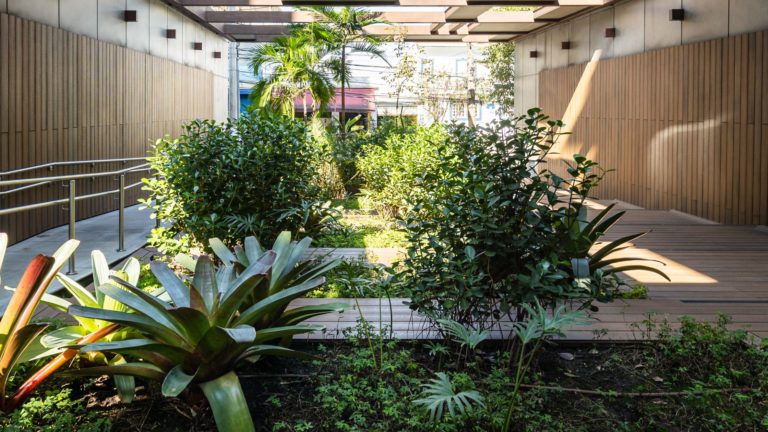In today’s urbanized world, where glass towers and concrete jungles dominate, there’s a growing yearning among many to reconnect with nature. This is where biophilic design comes in, providing a bridge between our inherent need to affiliate with nature and the spaces we occupy, particularly in interior design and decoration.
The Essence of Biophilic Design
Biophilic design isn’t just about having plants in your home or office. At its heart, biophilic design is about creating a holistic sense of connection and harmony with nature, integrating natural elements, materials, and patterns into modern architecture and interiors. It’s about more than just visual cues; it’s about engendering the tactile, auditory, and even olfactory experiences of nature in built environments.
Principles of Biophilic Design in Decoration
- Natural Light: One of the most fundamental elements of biophilic design is the use of natural light. By maximizing sunlight with large windows, skylights, or light shafts, interiors can mirror the rhythm of natural daylight, thereby connecting the inhabitants with the natural world outside.
- Organic Materials: Incorporating organic and natural materials like wood, stone, bamboo, or even clay, can not only mimic nature but also bring a tactile sense of the outdoors in. These materials not only look good but also often have a natural variance that provides a rich texture and depth.
- Nature Views and Landscapes: Even in urban settings, a well-positioned window or balcony overlooking a garden, a tree, or even a small patch of green can make a world of difference. Murals or artworks depicting natural sceneries can also serve as suitable substitutes where real views are unavailable.
- Natural Patterns and Forms: Fractal patterns seen in ferns or the branching patterns of trees can be reflected in artwork, textiles, or even the architectural elements of a space. The idea is to emulate the recurring patterns and forms found in nature.
- Water Features: The sound of trickling water or the sight of a serene water body can have a calming effect. Incorporating water features, even if it’s just a small indoor fountain, can evoke feelings of being close to nature.
- Varied Textures: Just as nature offers a diverse array of textures—from the smoothness of pebbles to the rough bark of trees—interiors can benefit from having varied tactile experiences. This can be introduced through furnishings, wall treatments, or decorative elements.

Incorporating Biophilic Design in Everyday Spaces
It might sound like biophilic design requires a grand overhaul of one’s living or working space, but even subtle changes can make a significant impact. Here are some straightforward ways to weave it into everyday environments:
- House Plants: Probably the most straightforward way to introduce nature indoors. From potted plants to vertical gardens, the options are endless.
- Nature-Inspired Decor: Think of cushions with botanical prints, carpets with organic patterns, or even a centerpiece made of driftwood.
- Sounds of Nature: Playing recordings of rain, flowing water, or forest sounds can transform a space’s auditory experience.
- Natural Fragrances: Using essential oils or naturally scented candles with fragrances like pine, lavender, or jasmine can evoke feelings of being in nature.
The Role of Color in Biophilic Design
When one thinks of nature, an immediate association is the vibrant spectrum of colors—from the serene blues of the oceans and skies to the fiery reds and oranges of autumn leaves. Color plays a vital role in how we perceive and connect with the world around us.
In biophilic design, using colors inspired by nature can evoke emotions and feelings associated with natural environments. Earthy tones like greens, browns, and blues can have a calming effect and provide a sense of grounding. On the other hand, vibrant colors like bright yellows or fiery reds, when used judiciously, can inject energy and vitality into a space.
Consider the following when using color in biophilic design:
- Seasonal Palettes: Adopting colors of specific seasons can provide a temporal connection with nature. Soft pastels for spring, vibrant shades for summer, rich and warm colors for autumn, and cool blues and whites for winter.
- Gradient Transitions: Just as nature doesn’t have abrupt color changes, using gradients or transitional color schemes can provide a more organic feel to interiors.
Technology’s Role in Enhancing Biophilic Experiences
While the essence of biophilic design is rooted in nature, modern technology can be leveraged to enhance and accentuate our connection with the natural world.
- Digital Nature Displays: High-resolution screens showcasing dynamic natural landscapes or sequences, like a blooming flower or a setting sun, can be immersive and connect city dwellers to nature.
- Ambient Sound Systems: These can be integrated into homes or offices, playing nature-inspired soundscapes, which can be especially therapeutic in noisy urban settings.
- Smart Lighting: Technology enables lighting that adjusts in intensity and color temperature in sync with the outdoor environment, mimicking the natural progression of daylight.
- Virtual Reality (VR): While it’s no substitute for the real thing, VR can provide immersive nature experiences, especially beneficial for spaces where physical constraints limit biophilic design implementations.
Incorporating technology doesn’t mean sidelining nature. Instead, it’s about using modern tools to augment our connection with the natural world, proving that even in a digitized age, our bond with nature remains unbroken.
Wrapping It Up
Biophilic design, at its core, celebrates our intrinsic relationship with nature. By adopting its principles in decoration, we not only beautify our spaces but also cater to our inherent affinity for the natural world. It’s a reminder that even in our rapidly urbanizing world, nature is not something external; it’s something we’re intrinsically a part of, and it’s something that can be felt, even within four walls.


